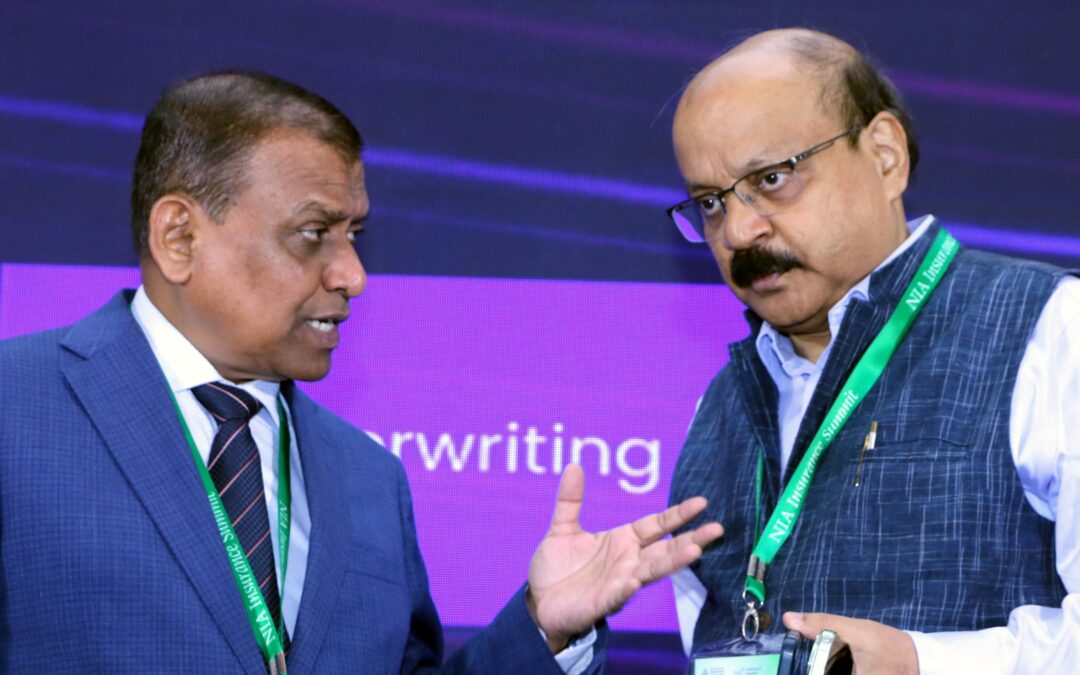(LtoR) Siddhartha Mohanty, CEO and MD, Life Insurance Corporation and Satyajit Tripathi, Member (Distribution), IRDAI at an event organised by Pune based National Insurance Academy in Mumbai
IRDAI’s methods for monitoring companies and intermediaries have evolved, with digital processes in place to detect deviations and ensure risk mitigation for policyholder safety, Satyajit Tripathi, Member (Distribution), IRDAI
Sitanshu Swain
Mumbai: Siddhartha Mohanty, CEO and MD, Life Insurance Corporation has cautioned that with the growing use of digital platforms, data privacy is a major concern for the insurance industry.
It is essential to ensure that digital innovation complies with regulations. Insurers, operating globally, must adhere to multiple regulations, and improve data privacy through technologies like blockchain.
Mohanty was delivering his keynote address at the flagship event of National Insurance Academy, on “Unveiling the Future-Industry 5.0: Digital Innovation in Insurance” on Thursday.
Mohanty elaborated that AI, ML and Blockchains are now being used to improve underwriting, claims processing and fraud detection and strong cybersecurity measures, including live monitoring of chatbots used for customer interactions and claims processing, must be in place.
The cost of technology investments may impact profit margins, he indicated.
Customer trust and experience need improvement through user-friendly digital platforms, where customers can interact with the machines as seamlessly as with humans, he said.
With technologies such as AI, Big Data, Machine Learning, and Cloud Computing, significant improvements have been made in industry processes. Industry 5.0 will place the human at the centre of these advancements, he said.
Mohanty elaborated that peer-to-peer insurance models, where risks are pooled and managed by communities, are still in their early stages. By embracing new technologies, the industry can not only improve existing processes but also transform to give better customer experience.
Industry 5.0 emphasizes a balance between machines and humans, creating collaborative ecosystems instead of replacing human involvement. Workforce adaptation is also critical, and employees must be upskilled to work with new technologies, he argued.
He stressed that adopting an open API ecosystem can create a more cohesive technological space, improving integration.
“Digital customer onboarding and dynamic pricing can be greatly enhanced through Insurtech solutions. Predictive analysis can also be used to identify fraud in claims processing and avoid losses. ,” he said.
Offering more personalized products can help insurers shift from transactional relationships to more trust-based connections with customers, he said.
Satyajit Tripathi, Member (Distribution), IRDAI, in his address highlighted the upcoming launch of BIMA SUGAM and stated that IRDAI’s methods for monitoring companies and intermediaries have evolved, with digital processes in place to detect deviations and ensure risk mitigation for policyholder safety.
Despite fraud analytics in place, some fraudsters continue to create misleading schemes and mis-sell policies. He stressed the importance of closing all loopholes to protect policyholders, he said.
He said digital innovation has transformed industries, leading to hybrid work culture and online exams during the pandemic. This transformation has also significantly impacted the traditional insurance industry, especially in operations like underwriting and risk assessment in policymaking.
Natural disasters, such as cyclones, are now better monitored, allowing timely communication of protective measures, added Tripathy.
He emphasized the need for improved risk modelling, increased use of technology to enhance efficiency, and the preparation of SOPs to handle difficult situations.
Digital risks are also emerging alongside digital innovations, and necessary steps must be taken to keep these risks in check to prevent potential disruptions, he cautioned.
He advised students entering their careers to stay informed about technological advancements and maintain preparedness, as the current pace of technology deployment is more disruptive than ever before.
A sense of alertness is necessary to protect the industry from upcoming technological disruptions, he suggested.

